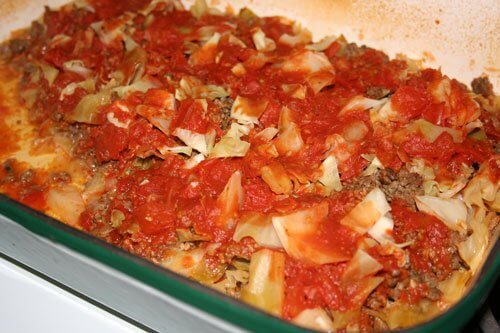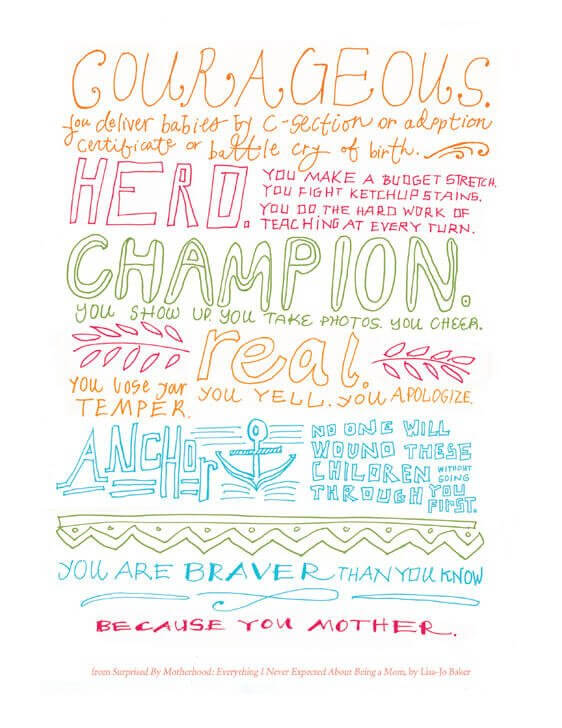Baby Steps: Using Alternative Grains

This week’s baby step is:
To choose one new grain to introduce to your family!
Why this step is important:
If you’ve been in a grocery store bakery lately, you will notice that there is quite the abundance of options: wheat, wheat and wheat. 🙂
Sadly, despite the fact that there are many incredibly nutritious and tasty grains out there, our culture has gotten into a rut of solely using wheat. Although there is nothing inherently wrong with wheat (in fact, it’s highly nutritious itself, and is wonderful to use in any kind of baking). The problem is that we overuse it, and for many people this can lead to a wheat sensitivity or even allergy, which is often unknown but can silently cause some minor health issues (and sometimes major ones).
Additionally, wheat is high in gluten, which can be irritating to the digestive tract of many people (again, gluten sensitivities are often unknown to those who have them). As well, wheat has been greatly engineered and altered over the years and is no longer the grain that it used to be. There are more ancient forms of wheat available that are not modified (such as spelt and kamut), and those who are sensitive to wheat often fare much better using these original grains.
Lastly, there is just a whole wide world of nutrients and taste that we are missing out on when we stick to a diet full of wheat! Here’s a quick rundown of the amazing other grains that are out there:
Amaranth– This ancient grain comes from the Aztecs. It is gluten free, extremely high in protein and iron, and is higher in nutrients than most other grains. It has a slightly distinctive taste, but can be substituted for flour in some recipes, and is often used in crackers and flatbreads.
Barley– Rich in potassium, sulfur, and phosphorus, barley contains very little gluten. It is great in soups, and the flour is nice for muffins, pancakes, etc. It also helps to stimulate the liver and lymphatic system, and helps to eliminate toxins from the body.
Buckwheat– Technically not a grain, this has a strong flavor and is usually used in small amounts in pancakes, or as Kasha in Eastern European foods. It is helpful for strong capillaries, healthy blood, and contains lots of vitamin E, calcium and the B vitamins. I also like to sprout it to make some amazing raw granola and treat bars. Gluten free.
Kamut– Although this grain is closely related to wheat, it is well tolerated by most people. It is very high in minerals and protein, and nutritionally superior to wheat. It makes excellent bread, pasta, and can be substituted for wheat in many recipes quite easily.
Millet– Some may use it as birdseed (literally!), but I consider it a champion of grains, as millet has the most complete protein of any grain except for quinoa and amaranth (but it is cheaper and easier to find!). Prized by the Hunza people, who were extraordinarily healthy, as well as by the Chinese. It is very alkaline, which helps to maintain a healthy pH balance in our body, and it is also gluten free. It is good for hot cereals, and the flour can be used in many recipes as well (though it must usually be used in combination with other flours). Also makes a great rice substitute.
Oats– Helps to stabilize blood sugar and sluggish thyroid glands. The protein is easily assimilated, and they are high in calcium, iodine, phosphorus, iron, vitamin E and many others. Excellent as a cereal, but also for pancakes, cookies, even a filler in meatloaf!
Quinoa (kee-no-ah)- This is my husband’s favorite grain to eat with dinner. Nutty tasting, soft and so fast to cook, this grain makes a great rice substitute and is lovely in stews, soups, casseroles, etc. It is well tolerated by most with grain allergies, and is gluten free. Very good source of protein, B vitamins, iron and fiber.
Rye– This strong tasting grain also does well for those with allergies, though it does have some gluten. It is usually used in combination with other flours, and often in incredibly delicious breads (mmm, rye sourdough…). Very high in lysine, an important amino acid.
Spelt- This is my standard wheat alternative, and is actually related to wheat. It is an ancient grain, containing high fiber, protein and all 8 essential amino acids, as well as B vitamins. It substitutes 1:1 for wheat, and is very easy to use, with a pleasant and subtle taste.
Teff– Actually a grass, from Ethiopia. The seed is very small (smaller than millet or quinoa), and is commonly used to make flatbreads. It is gluten free, and has very high amounts of protein, calcium, iron and fiber.
How to get started with this step:
The best way is to just choose a grain that sounds interesting to you, add it to your grocery list (the more rare grains may have to be purchased from a health food store, or occasionally online depending where you live), and then try out one of these recipes below, or find one of you own!
Once you’ve successfully tried one and found a few ways to incorporate it into your diet, consider adding another in the same manner. I make a goal of serving my family as many different grains per week as possible, 3-4 at the very minimum. This helps us to get a wider range of nutrients, and not over-consume any one grain, plus we just love the variety!
Online Resources:
Waffles/Pancakes (options of many different grains to use)
Millet Muffins and Spelt Biscuits
No-Yeast Spelt Bread
Quinoa Tabbouleh (cold grain salad)
Bittersweet Chocolate Shortbread Cookies
All you ever wanted to know about oatmeal
Cinnamon Scones (spelt, barley)
Rich, Whole Grain Crackers
Rustic Buttermilk Millet Drop Biscuits
This is just a small sampling of the kind of recipes that are out there. I actually pulled up allrecipes.com and just typed in “quinoa” and came up with pages of recipes, as well as some recipes for millet, amaranth, rye, barley, oats and spelt.
There are so many recipes out there- all you really need to do is choose a grain, and google “______ recipes” (fill in appropriate grain name), and I think you will find out just how much there is out there!
And beyond specific recipes, many of these grains can be substituted into many of your regular recipes. Perhaps later this week I will post up a chart showing how much of the different grains to use when substituting (because sometimes you need to use more or less of a grain, depending which grain it is)- would that be helpful?
Reading Resources:
Sue Gregg’s “Introduction to Whole Grains” (excellent book- read my review)
As well, Nourishing Traditions is excellent for discussing and introducing many new grains and recipes to use them in. Prescription for Dietary Wellness is the book I used as a resource for much of the grain information in this post (though it has strong vegetarian leanings, so I don’t recommend everything about the book, but overall it is a great resource).






This is a great post! I hope that you decide to post that chart. Thanks!
yes, your chart for substitution of grains would be most helpful! Is quinoa pretty easy to find in a grocery store? I haven’t seen it yet but also haven’t been looking very hard. Are the oats you’re talking about just regular oats you would find in the oatmeal/cereal isle? Quaker??
This post couldn’t have come at a better time. I was looking for something just like this! We are slowly trying to add new/different grains into our diets here and this post was very helpful! 🙂 Thank you!
~Melissa
Thanks for doing this series, Stephanie. I am interested in trying quinoa, if I can find any in our rural area.
I was just discussing with my husband how I dislike that wheat, rice, and oats are the only grains we eat. The next trip to the bulk store I had planned on picking up spelt, but I think I will add Millet and Quinoa to the list as well.
Keep posting baby steps…it’s the little things in life that add up to a great sum!
Ok, I will definitely make a point of getting that chart made and up sometime this week!
Question: Are you able to find the grains that you use for wheat flour substitutes already ground or do you grind them? In our organic food store, they only have the whole grains and I don’t have the means to grind it.
For those asking about Quinoa…I know it depends on where you live, but I was surprised how easy it was to find (although I don’t think it is at my regular food store although I haven’t looked)
What a great post! I am actually waiting for test results to find out if I have Celiacs Disease and I will have to explore a lot of new foods if I do have that. Thanks for this insightful post!
I’m having trouble weighing up the whole ‘food miles’ thing with nutritious/organic eating. eg quinoa is shipped here from peru, organic chickpeas from china, bulgar from turkey..at what cost to the enviroment do I continue using these foods? what are your thoughts about this?
Hi Stephanie,
I saw a comment of yours on another blog, stating that you don’t use wheat at all. I was just curious about that. Does your family have sensitivities, or are you trying to avoid a problem in the future, or is it because it is engineered? Or another reason?
I use a lot of wheat, but have begun to reconsider and just wondered what was your main reason for avoiding it (and paying more for spelt).
Thanks.
A wonderful list of grains. Indeed, we have become too dependent on wheat that we have stopped paying attention to most of these, in the house, we have also tried to use grains like barley and quinoa and they are great. We have a family member that is wheat intolerant, thus our wheat free diet, at first I though “Oh no, that means no more bread and baked goods in the house!” but in came countless recipes that used grains etc instead of wheat, which has definitely helped a lot 🙂